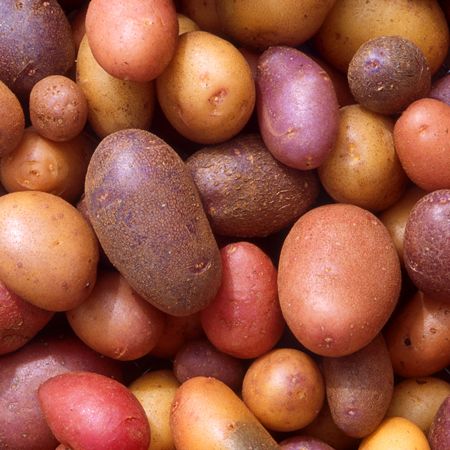Eating In Season

Eating a variety of food helps ensure a balanced diet, one that provides the body with all the nutrients it needs. Harvested at peak times, locally-produced food offers the most flavor and nutritional value. Moreover, seasonal foods match what the body needs throughout the year. Water-packed produce like cucumbers and berries keep the body hydrated in summer, while winter’s calorically-dense foods like beef and potatoes give the body energy. Plus a rotating selection of ingredients leads to creativity in the kitchen and keeps your taste buds entertained.
In addition to offering the best flavor and nutrition, seasonal, locally-produced food costs less for both the farmer and the consumer. Farmers spend less by producing food in season; they can avoid reliance on greenhouses to grow summer produce in winter’s low-light conditions and bypass the negative environmental impact of shipping their harvest thousands of miles. Farmers pass on those savings to consumers.
Where to Find Seasonal Foods
In addition to growing a portion of your own food, you can utilize farmers’ markets. Most communities have farmers’ markets where often you can find not only produce, but also canned goods, meat and cheese. Small businesses, like grocery stores and delis, often have locally-sourced produce, and you can always choose to visit restaurants that use local ingredients. For more ways to eat locally, visit simplesteps.org/eat-local.
Tips to Eating In Season
If you can’t envision a winter without summer produce like blueberries or tomatoes, buy in bulk in season and preserve, freeze and/or can. This requires planning, but summer fruits in the winter will be worth it.
Seasonal Foods
Winter
Beef: naturally-grown beef isn’t a year-round product, contrary to popular belief. Grass-fed cattle are seasonally slaughtered in late fall when the meat is at its peak. In the winter months, the cows’ bodies begin to consume the fat, leading to leaner, poorer-tasting meat.
Potatoes: don’t remove the skins, they’re packed with fiber.
Pork: like beef, late fall is when pork is at its peak.
Citrus: look for heavy fruits, as they contain more juice; they can be stored for up to six weeks in the fridge.
Nuts: high in protein and heart-healthy fat, most nuts are ready for harvest between September and November.
Spring
Eggs: eggs are more abundant in spring as the days lengthen and chickens are exposed to more light.
Lettuce: the darker and leafier the green, the better. Deep-green leaves are packed with antioxidants, which are believed to help prevent cancer.
Strawberries: harvest strawberries by cutting the stems, not pulling on the berry.
Spinach: these nutrient-rich greens produce a bountiful crop in the low-light conditions of fall and spring.
Asparagus: a good source of multiple vitamins including zinc, magnesium, B and calcium. Stem thickness indicates the age of the plant; asparagus are best eaten when young, before the stems get woody.
Summer
Chicken: spring-born chickens reach full size during the summer and are ready for consumption.
Tomatoes: don’t store these in the fridge; doing so alters their texture.
Corn: to determine if corn is ripe, look for brown, dry silk and round or blunt ends rather than pointed ends. If you’re still not sure, pierce a fresh kernel; at its peak sweetness, liquid comes out.
Peppers: pick peppers at their earliest maturity to increase and extend yields. Peppers tend to deteriorate quickly if not picked promptly, when they become their mature color.
Blueberries: These have a short shelf life, only about 14 days, and are best stored in glass or plastic. To increase the shelf life of fresh berries, spread them out in a single layer for storage.
Autumn
Grapes: look for fully-colored, plump grapes that are firmly attached to the stem.
Sweet Potatoes: the longer a sweet potato cooks, the sweeter it becomes as the starch turns to sugar.
Apples: best stored in the fridge; avoid buying bruised or damaged fruit. Varieties can be chosen based on climate. Arkansas Black is well-suited to our region.
Cabbage: select firm, heavy cabbages that are not cracked or dry. Store in the fridge for up to two weeks. Once cut, the cabbage will stay fresh for a few days.
Pumpkins: choose small, thin-skinned varieties for eating. These smaller varieties are bred to maximize sweetness and flavor as opposed to their bigger, more fibrous cousins that are turned into Jack-O-Lanterns.
Article courtesy of AY Magazine.


